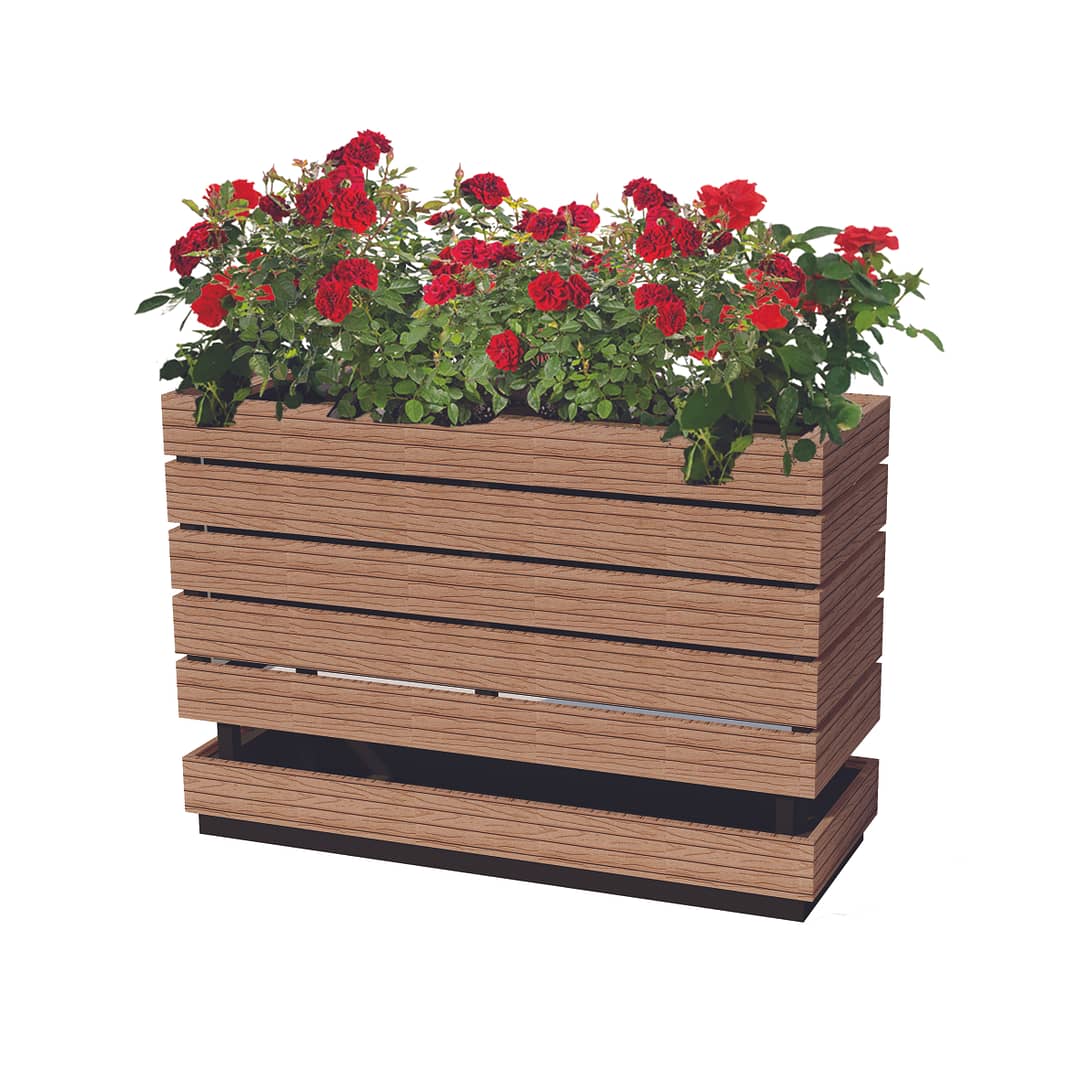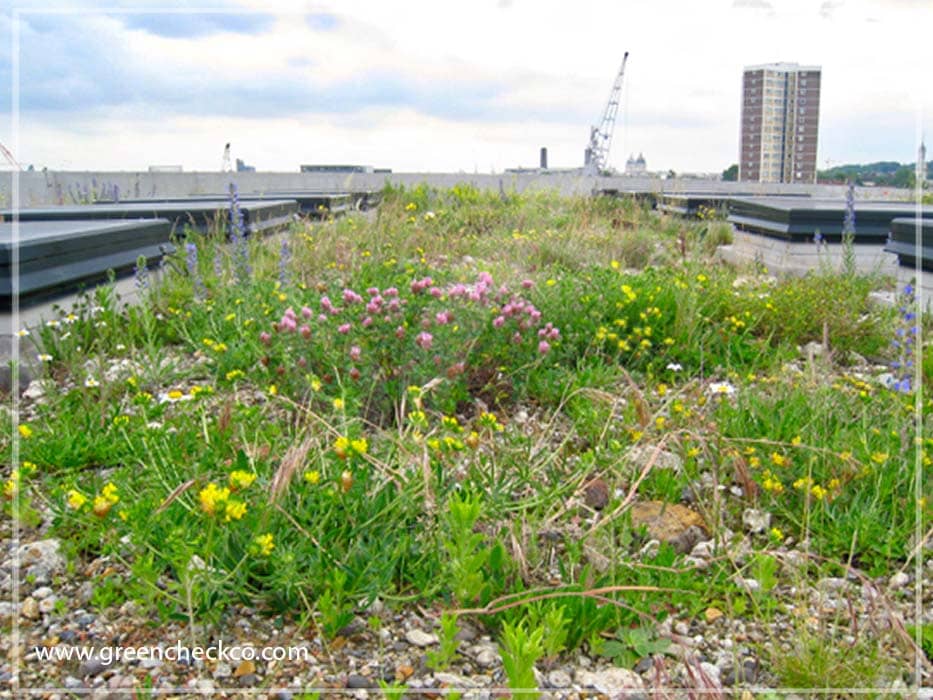Green roofs with Sedum
Sedum roofs, also known as green roofs with Sedum, are highly favored for their natural properties, which make this succulent plant ideal for roof greening. Sedum, commonly referred to as stonecrop, belongs to the Crassulaceae family, which encompasses hundreds of species and thousands of varieties of succulent plants. Succulents are characterized by their ability to store water in specific plant parts, and Sedum excels in storing water in its leaves, earning it the nickname "leaf succulent."
Sedum's metabolic process sets it apart from other plants. During nighttime, Sedum absorbs carbon dioxide through its stomata and converts it into malic acid. When exposed to sunlight during the day, the malic acid is broken down, enabling photosynthesis. The stomata of Sedum leaves open exclusively at night, reducing moisture loss during hot and dry daytime conditions.
While many Sedum species are native to the northern hemisphere, particularly around the Mediterranean region, they can also be found in dry and cold areas of North Africa and South America, where water availability may be limited. Sedum's natural properties make it a low-maintenance option for green roofs, as it requires minimal water and nutrients, whether from rainfall or other sources.
Overall, Sedum roofs offer numerous benefits for roof greening, including water conservation, reduced maintenance needs, and adaptability to various environmental conditions. Green roofs can thrive by harnessing the Sedum's natural resilience and water-storing capabilities while minimizing water usage and maintenance efforts.

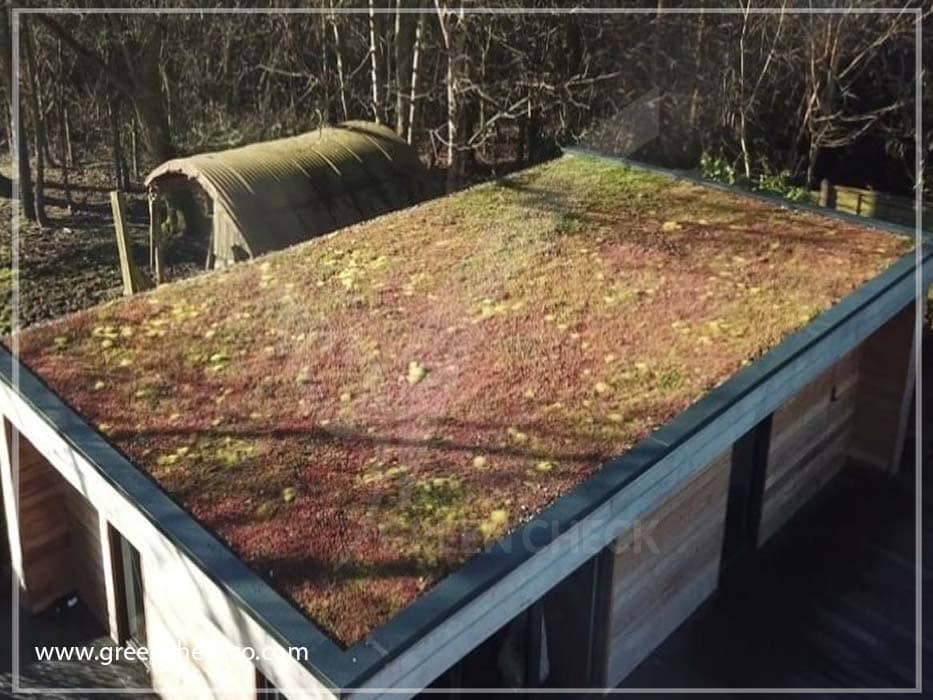
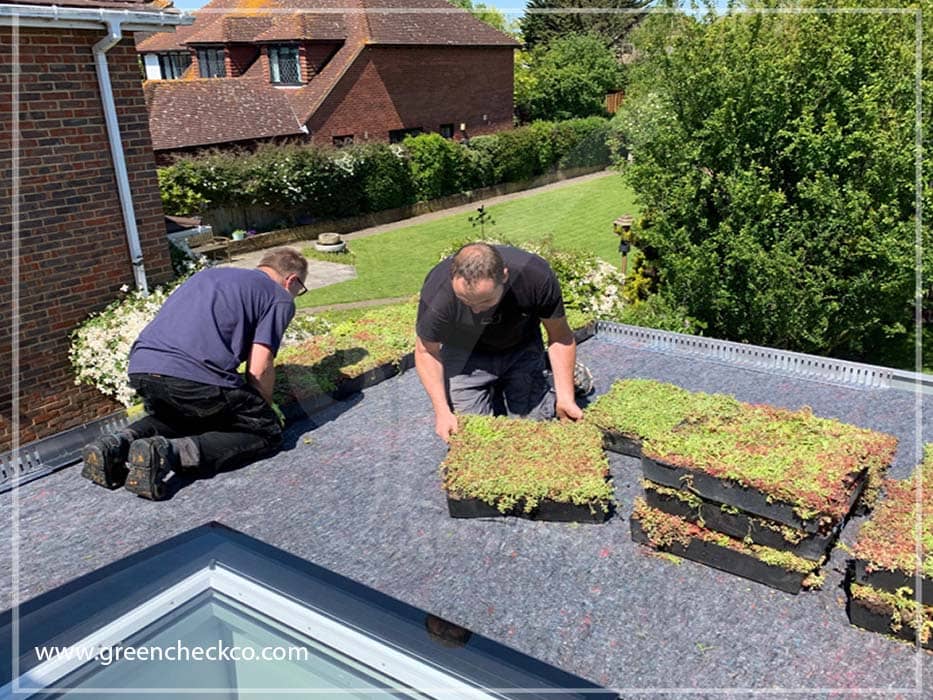
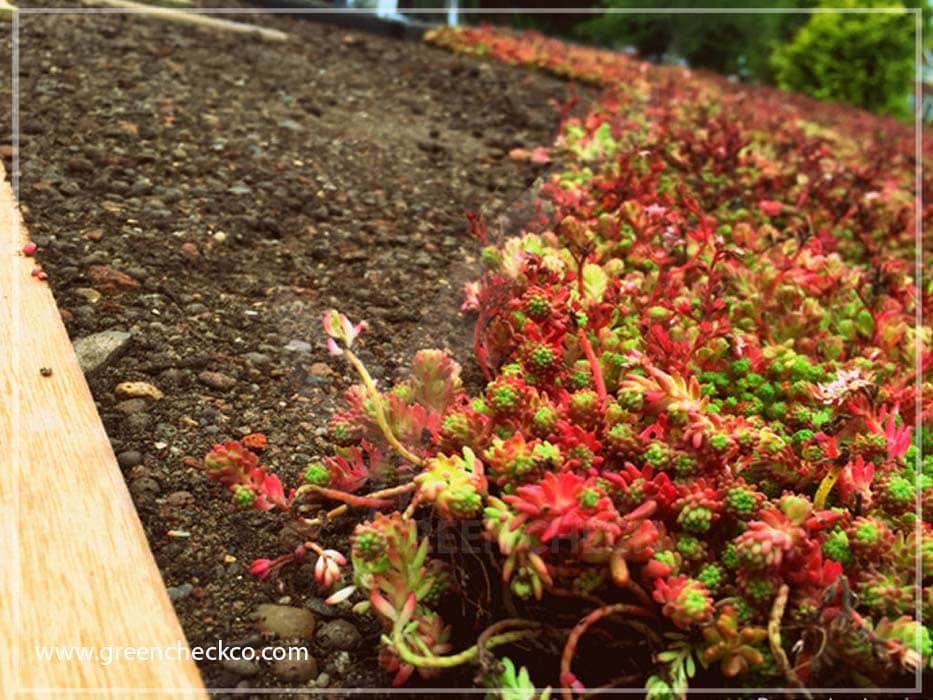
What is a Sedum roof with Sedum mats?
A Sedum roof with Sedum mats refers to using pre-grown Sedum vegetation in mat form for green roof installations. An extensive green roof, also known as a Sedum roof, is a type of roof that features vegetation capable of autonomous and further development. Typically, extensive green roofs have a substrate thickness ranging from 4 to 15 cm and weigh between 45 to 220 kilograms per square meter.
When Sedum mats are utilized on a green roof, the weight is approximately 45 kilograms per square meter. However, when opting for a biodiverse vegetation mix, which includes a combination of Sedums, grasses, herbs, plants, and nectar plants, a thicker substrate layer is required, resulting in a weight of around 150 kilograms per square meter. This weight difference accounts for the additional substrate necessary to support the diverse vegetation.
The use of Sedum mats offers several advantages for greening roofs. Unlike loose Sedum plants, installing Sedum mats is straightforward and time-saving. The mats come with pre-grown Sedum vegetation, simplifying the installation process.
benefits of Sedum for a green roof in a row
1. Drought Resistance:
Sedum is highly adaptable to arid conditions and can withstand drought, making it suitable for roofgarden and green roofs in dry climates or during water scarcity.
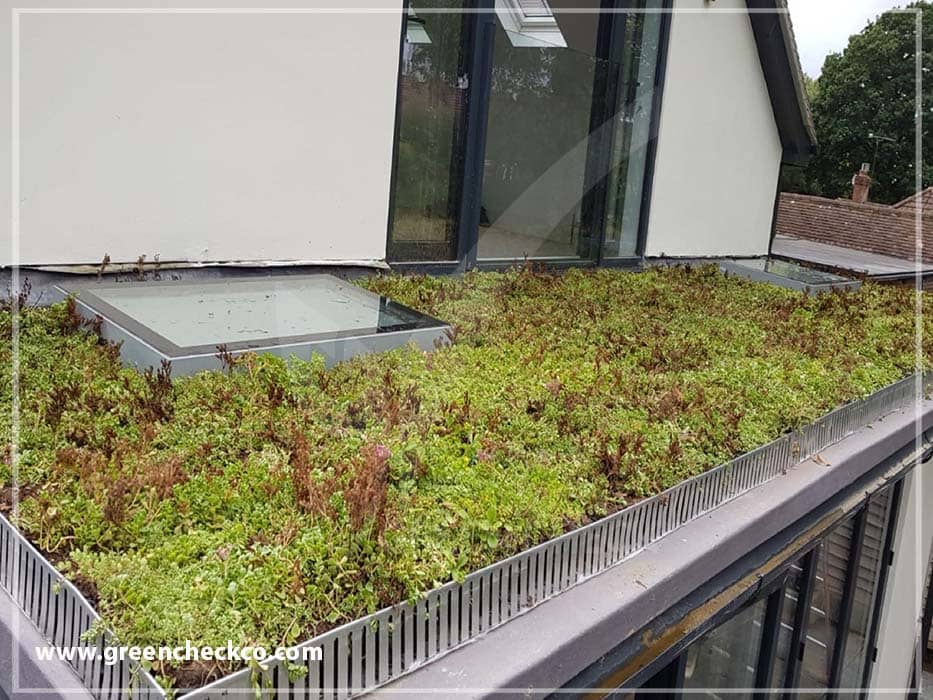
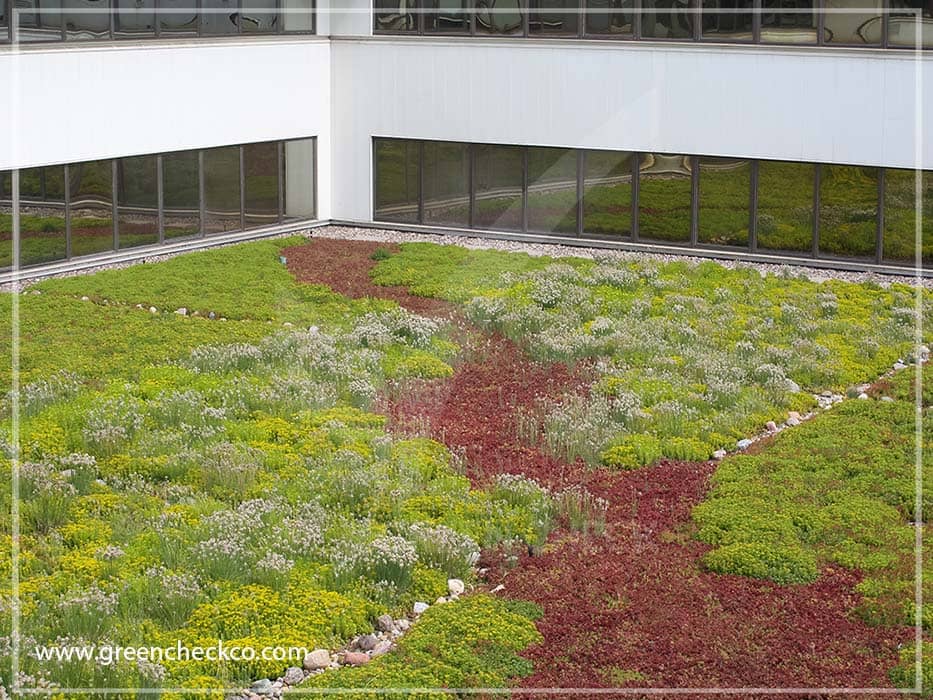
2. Low Water Requirements:
Once established, Sedum requires little water, reducing the irrigation needed for the green roof garden. This helps conserve water resources and lowers maintenance efforts.
3. Excellent Water Retention:
Sedum's succulent leaves allow it to store water, reducing moisture loss and helping the plant survive in challenging conditions. This feature helps retain water on the roof and prevent runoff during rainfall.
4. Shallow Root Systems:
Sedum has shallow root systems that align well with the limited substrate depth typically found in extensive green roofs. This characteristic reduces the structural load on the building while still providing adequate vegetation cover.
5. Low Maintenance:
Sedum is a low-maintenance plant that requires minimal care once established. It is naturally resistant to pests and diseases, reducing the need for chemical interventions or frequent monitoring.
6. Biodiversity Support:
Sedum attracts pollinators such as bees and butterflies, contributing to biodiversity in urban areas. It can also serve as a habitat for small insects and birds, enhancing ecological diversity.
7. Thermal Insulation:
Sedum roofs provide an additional layer of insulation, helping to regulate temperature fluctuations in the building below and reducing energy consumption for heating and cooling.
8. Stormwater Management:
Sedum roofs absorb and retain rainwater, reducing stormwater runoff and alleviating the burden on urban drainage systems. This can help prevent flooding and improve water quality by filtering pollutants.
9. Aesthetics:
Sedum offers a visually appealing green cover for rooftops, enhancing the overall appearance of the building and integrating it with the surrounding environment.
10. Longevity:
Sedum is a hardy plant that can withstand harsh weather conditions, including strong winds and temperature extremes. Its resilience contributes to the longevity and durability of green
Green Check Company operates green roofs with sesum in Canada and other countries aroundworldwide. If you need roof garden, green terrace, or green wall services, be sure to contact us.

